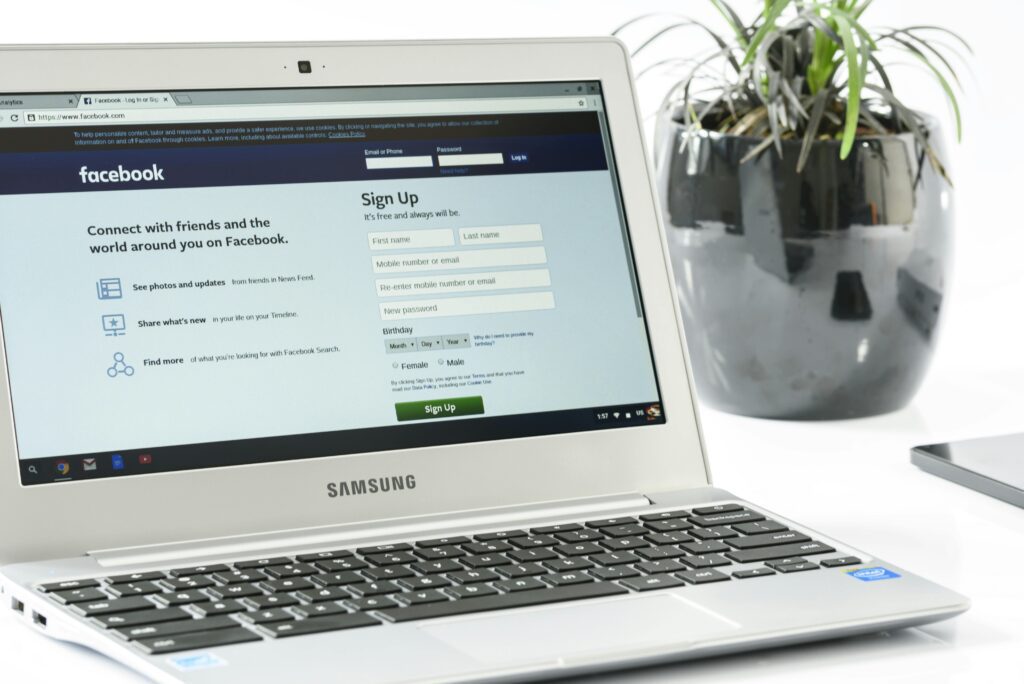In today’s competitive digital marketplace, understanding customer sentiment after a purchase can make the difference between a one-time buyer and a loyal brand advocate. Studies consistently show that companies responding to customer feedback see a 25% to 30% higher retention rate [1]. Post-purchase surveys represent one of the most powerful yet underutilized tools in a marketer’s arsenal, providing direct insight into customer experiences when their memory of the purchase journey is still fresh and their emotional investment is at its peak.
What Are Post-Purchase Surveys and Their Core Components
Post-purchase surveys are specialized questionnaires sent to customers immediately after they complete a transaction, designed to capture feedback about their buying experience, product satisfaction, and overall brand perception [2]. Unlike broader customer experience surveys, these targeted instruments focus specifically on the purchase journey and its immediate aftermath [3].
The core components of effective post-purchase surveys include satisfaction rating questions, open-ended feedback opportunities, attribution tracking inquiries, and product-specific evaluation metrics. These surveys typically contain 1-3 questions to maintain high completion rates, as surveys with this length achieve an average completion rate of 83.34% compared to just 41.94% for surveys with 15 or more questions [5].
Modern post-purchase surveys can be deployed through multiple channels including email, SMS, website pop-ups, in-app notifications, and embedded directly on thank-you pages. The most effective implementations integrate seamlessly into the customer journey, appearing at the moment of highest engagement when customers are most willing to share their thoughts [7].
Why Post-Purchase Surveys Matter in Digital Marketing Strategy
Post-purchase surveys have evolved from simple feedback collection tools to strategic assets that drive measurable business outcomes. In the current digital marketing landscape, where customer acquisition costs continue to rise and privacy regulations limit traditional tracking methods, these surveys provide invaluable first-party data that enables more precise targeting and personalization.
The importance of post-purchase surveys is underscored by several compelling statistics. Research indicates that 41% of sales are generated by repeat purchases from satisfied customers, making post-purchase engagement crucial for long-term profitability. Additionally, repeat customers refer 50% more people to businesses than one-time buyers, amplifying the impact of positive post-purchase experiences.
Furthermore, businesses have increased their feedback collection efforts by over 50% in the past three years, recognizing the strategic value of customer insights in an increasingly data-driven marketplace. This trend reflects the growing understanding that post-purchase feedback directly influences customer lifetime value, with satisfied customers being significantly more likely to make repeat purchases and recommend brands to others .
The timing advantage of post-purchase surveys cannot be overstated, as customer memory and emotional engagement peak immediately after purchase [7]. This creates a unique window of opportunity to gather authentic, detailed feedback that would be impossible to capture through other means [13].
The Psychology Behind Post-Purchase Surveys and Consumer Behavior
Understanding the psychological principles that drive post-purchase survey effectiveness is essential for creating compelling feedback collection strategies. Three key psychological mechanisms significantly influence how customers respond to these surveys and why they prove so effective in digital marketing contexts.
The Reciprocity Principle forms the foundation of successful post-purchase survey engagement. When brands provide value to customers through exceptional service, quality products, or positive experiences, customers feel an innate obligation to reciprocate by offering feedback, reviews, or testimonials [15]. This psychological tendency creates a natural inclination for satisfied customers to participate in surveys, especially when positioned as an opportunity to help the brand improve.
Social Proof and Validation Seeking represents another powerful psychological driver behind survey participation. Customers want to feel that their opinions matter and that their experiences align with or influence others. Post-purchase surveys tap into this desire by positioning customer feedback as valuable input that shapes future product development and service improvements. When customers believe their responses will be acted upon, they’re significantly more likely to participate and provide thoughtful, detailed feedback [1].
Post-Purchase Cognitive Dissonance creates a unique psychological state that makes customers particularly receptive to feedback requests. After making a purchase, customers naturally evaluate whether their decision was correct, leading to either satisfaction or buyer’s remorse. Post-purchase surveys provide an outlet for customers to process these feelings while giving brands the opportunity to address any concerns before they escalate into negative reviews or returns. This psychological timing makes the immediate post-purchase period ideal for gathering authentic customer sentiment.
How Post-Purchase Surveys Work in Practice
The mechanics of post-purchase surveys involve a carefully orchestrated sequence of touchpoints designed to maximize response rates while gathering actionable insights [23]. Understanding these operational components enables marketers to design more effective feedback collection systems.
Step 1: Trigger Configuration and Timing begins immediately after purchase completion, with the most effective surveys deployed within 24 hours of the transaction. For example, an e-commerce retailer might automatically trigger a survey email 2 hours after order confirmation, when customer satisfaction is high but the experience remains fresh in memory. The trigger system should account for different purchase types, with digital products receiving immediate surveys while physical goods might wait until after delivery confirmation.
Step 2: Channel Selection and Delivery Method determines how customers will encounter the survey, with email being the most common approach but increasingly diversified across SMS, in-app notifications, and website pop-ups [24]. A successful implementation might use Native’s approach, displaying a brief survey directly on the thank-you page while simultaneously sending a follow-up email for customers who don’t complete the immediate version [25]. This multi-channel strategy ensures maximum reach while respecting customer preferences [26].
Step 3: Question Design and Survey Flow focuses on crafting specific, actionable questions that align with business objectives. Effective surveys begin with a simple satisfaction rating, followed by attribution questions like “How did you hear about us?” and conclude with open-ended feedback opportunities. For instance, a subscription service might ask: “What was the main factor in your decision to subscribe today?” followed by “What other brands did you consider?” to gather competitive intelligence [29].
Step 4: Response Collection and Data Integration involves seamlessly capturing survey responses and routing them to appropriate business systems. Modern implementations integrate directly with customer relationship management (CRM) platforms, email marketing tools, and analytics systems to ensure feedback immediately influences customer segmentation and future marketing efforts. This integration enables real-time personalization based on survey responses.
Step 5: Analysis and Action Loop transforms raw survey data into actionable business insights through systematic analysis and response protocols. High-performing brands establish clear workflows for addressing negative feedback, celebrating positive responses, and incorporating insights into product development and marketing strategies. This systematic approach ensures that survey data drives meaningful business improvements rather than remaining unused in databases.
Why Post-Purchase Surveys Prove Exceptionally Effective
The effectiveness of post-purchase surveys stems from several strategic, technical, and psychological factors that distinguish them from other feedback collection methods [19]. These advantages explain why leading brands increasingly rely on post-purchase surveys as core components of their customer experience strategies.
Peak Emotional Engagement and Memory Clarity creates optimal conditions for gathering detailed, accurate feedback. Immediately after purchase, customers experience heightened emotional states and possess clear memories of their decision-making process, product interactions, and service experiences. This psychological state produces more authentic responses compared to surveys conducted weeks or months later when memories fade and emotional intensity diminishes. Research demonstrates that surveys delivered within 24 hours of purchase achieve significantly higher response rates and more detailed feedback than delayed surveys.
Attribution Accuracy and Marketing Intelligence provides brands with crucial insights that traditional analytics cannot capture [28]. Post-purchase surveys reveal the customer journey from the customer’s perspective, identifying influential touchpoints that may not appear in standard attribution models [9]. For example, a customer might indicate that a podcast advertisement initially sparked their interest, even though they ultimately converted through a Google search, providing marketers with more complete understanding of their channel effectiveness. This first-party data becomes increasingly valuable as third-party tracking limitations expand.
Immediate Issue Identification and Resolution enables proactive customer service that prevents negative experiences from escalating. When surveys identify dissatisfied customers immediately after purchase, brands can intervene quickly to address concerns, potentially converting negative experiences into positive ones [32]. Studies show that 92% of shoppers would quit doing business with a company after just one bad customer service experience, making early identification and resolution of issues critical for retention [10].
Customer Retention and Lifetime Value Impact demonstrates measurable business outcomes that justify survey investments. Companies that actively respond to customer feedback achieve 25% to 30% higher retention rates, while customers who feel heard are more likely to make repeat purchases and provide referrals [1]. The data collected through post-purchase surveys enables more precise customer segmentation, personalized marketing campaigns, and product development decisions that directly impact long-term customer value.
How to Implement Post-Purchase Surveys Successfully
Implementing effective post-purchase surveys requires strategic planning, appropriate technology selection, and systematic execution. The following comprehensive approach ensures maximum effectiveness while minimizing implementation challenges.
Step 1: Define Clear Objectives and Success Metrics establishes the foundation for effective survey design and measurement. Begin by identifying specific business goals such as improving customer satisfaction scores, increasing marketing attribution accuracy, or reducing product return rates [3]. Successful implementations set measurable targets like achieving 15% survey response rates or identifying the source of 80% of new customer acquisitions [28]. Document how survey insights will influence business decisions to ensure the program generates actionable value rather than just data collection.
Step 2: Select Appropriate Survey Technology and Integration Platforms determines the technical foundation for survey deployment and data management. Leading post-purchase survey tools include RaveCapture for comprehensive feedback collection with strong e-commerce platform integrations, Klaviyo for email-based surveys with advanced customer segmentation capabilities [33], and Fairing for specialized attribution tracking and zero-party data collection [28]. Choose platforms that integrate seamlessly with existing marketing technology stacks including CRM systems, email marketing tools, and analytics platforms.
Step 3: Design Concise, Targeted Question Sets focuses on gathering specific insights while maintaining high completion rates. Limit surveys to 1-3 questions to achieve optimal response rates, beginning with simple satisfaction ratings before progressing to more complex attribution or open-ended questions [5]. Effective question examples include “How satisfied are you with your purchase experience?” (1-5 scale), “How did you first hear about our brand?” (multiple choice), and “What was the main factor in your decision to purchase today?” (open-ended) [29]. Customize questions based on purchase type, customer segment, and specific business objectives [26].
Step 4: Configure Optimal Timing and Delivery Channels maximizes response rates through strategic survey deployment. Deploy surveys within 2-24 hours of purchase completion for digital products, or after delivery confirmation for physical goods [6]. Implement multi-channel delivery including immediate thank-you page displays, follow-up emails, and SMS notifications to accommodate different customer preferences [25]. Test various timing intervals to identify optimal deployment windows for specific customer segments and product categories [4].
Step 5: Establish Response Analysis and Action Workflows ensures survey insights drive meaningful business improvements [31]. Create systematic processes for routing feedback to appropriate teams, with negative responses triggering immediate customer service outreach and positive feedback contributing to testimonial collection. Implement regular analysis cycles to identify trends, measure satisfaction improvements, and adjust product or service offerings based on customer input. Establish clear protocols for incorporating attribution insights into marketing budget allocation and campaign optimization decisions.
Step 6: Monitor Performance and Optimize Continuously maintains survey effectiveness through ongoing refinement. Track key metrics including response rates, completion rates, customer satisfaction trends, and the business impact of survey-driven changes. Conduct regular A/B testing of question formats, timing, incentives, and delivery channels to optimize performance. Analyze survey fatigue indicators and adjust frequency or targeting to maintain high engagement levels while gathering necessary insights.
Step 7: Scale and Expand Based on Success grows the survey program’s impact across the organization. Begin with core post-purchase surveys before expanding to include product-specific feedback, shipping experience evaluations, and customer service interaction surveys. Integrate survey insights into broader customer experience initiatives, product development roadmaps, and marketing strategy planning. Train team members across departments to interpret and act on survey data, creating organization-wide customer-centricity based on direct feedback.
Advanced Strategies for Maximizing Post-Purchase Survey Impact

Beyond basic implementation, sophisticated post-purchase survey strategies can unlock additional value through advanced personalization, predictive analytics, and integrated customer experience optimization. These approaches distinguish leading brands from competitors in their ability to transform customer feedback into sustainable competitive advantages.
Dynamic Survey Personalization adapts questions and delivery methods based on individual customer characteristics, purchase history, and behavioral data. Advanced implementations use customer segmentation to display relevant questions, with first-time buyers receiving attribution-focused surveys while repeat customers encounter satisfaction and loyalty measurement questions. This personalized approach increases response rates and generates more relevant insights for different customer segments.
Predictive Customer Health Scoring combines post-purchase survey responses with behavioral data to identify at-risk customers and expansion opportunities. By analyzing patterns in survey responses alongside purchase frequency, support interactions, and engagement metrics, brands can proactively address potential churn while identifying customers ready for upselling or cross-selling initiatives. This predictive approach transforms reactive feedback collection into proactive customer success management.
Cross-Channel Experience Optimization uses post-purchase survey insights to improve the entire customer journey rather than just individual touchpoints. Leading brands analyze survey feedback to identify friction points across all customer interactions, from initial awareness through post-purchase support, creating comprehensive experience improvements that compound over time. This holistic approach ensures that survey investments generate maximum return through systematic customer experience enhancement.
Conclusion: Transforming Customer Insights into Competitive Advantage
Post-purchase surveys represent far more than simple feedback collection tools—they serve as strategic assets that bridge the gap between customer experience and business growth. The convergence of heightened customer expectations, increased acquisition costs, and privacy-driven marketing limitations makes post-purchase surveys essential for sustainable digital marketing success.
The evidence overwhelmingly supports the strategic importance of post-purchase surveys in modern marketing operations. Companies implementing comprehensive feedback collection systems achieve measurably higher retention rates, more accurate marketing attribution, and deeper customer insights that inform product development and service improvements. These surveys provide the first-party data necessary for personalized marketing while creating opportunities for proactive customer success management.
The psychological timing of post-purchase surveys—capturing customers at peak emotional engagement with clear purchase memories—creates unique opportunities for gathering authentic insights that drive meaningful business improvements. When combined with appropriate technology, strategic question design, and systematic analysis workflows, these surveys become powerful engines for customer-driven growth.
Most importantly, post-purchase surveys demonstrate genuine commitment to customer success, transforming transactional relationships into ongoing partnerships built on continuous improvement and mutual value creation. In an era where customer experience increasingly determines competitive success, the brands that master post-purchase feedback collection will possess decisive advantages in building loyalty, driving growth, and creating sustainable market positions.
The question for digital marketers is not whether to implement post-purchase surveys, but how quickly they can deploy these systems to begin capturing the customer insights that will define their competitive future.
Frequently Asked Questions: Post-Purchase Surveys
What is the optimal timing for sending post-purchase surveys to maximize response rates?
The optimal timing for post-purchase surveys depends on your product type and business model. For digital products and services, send surveys within 24-48 hours of purchase completion to capture immediate feedback while the experience remains fresh. For physical products, wait 7-10 days after estimated delivery to allow customers time to receive and evaluate their purchase. Research shows that surveys sent within this timeframe achieve significantly higher completion rates, with immediate post-purchase surveys generating response rates between 15-25% compared to delayed surveys [4]. The key is identifying your customer’s “happy moment” – the point when they’re most satisfied with their purchase experience.
How many questions should I include in my post-purchase survey for optimal completion rates?
Keep your post-purchase surveys to 1-3 questions for maximum effectiveness and completion rates. Research demonstrates that surveys with 1-3 questions achieve an impressive 83.34% completion rate, while surveys with 4-8 questions drop to 65.15% completion [6]. Surveys with 15 or more questions plummet to just 41.94% completion due to survey fatigue [7][6]. Focus on asking only the most critical questions that directly impact your business objectives, such as overall satisfaction ratings, attribution tracking, and specific product feedback. Remember that customers are more likely to complete shorter surveys, providing you with higher-quality data from a larger sample size.
What are the most effective channels for distributing post-purchase surveys?
Email remains the most popular channel for post-purchase surveys, typically generating response rates between 6-25% with an average of 12-15% [4]. However, multi-channel approaches prove most effective, combining immediate thank-you page displays with follow-up email surveys to maximize reach. In-person or event-based surveys achieve the highest response rates at 85-95%, though they’re not practical for most e-commerce businesses [4]. SMS and in-app notifications serve as valuable supplementary channels, particularly for mobile-first businesses. The key is matching your distribution channel to customer preferences while ensuring surveys are mobile-friendly, as many customers will complete them on their devices.
Which post-purchase survey questions provide the most valuable business insights?
The most valuable post-purchase survey questions focus on overall satisfaction, marketing attribution, and specific experience feedback. Essential questions include: “How satisfied are you with your purchase?” (using a 1-5 or 1-10 scale), “How did you first hear about our brand?” for attribution tracking, and “What was the main factor in your decision to purchase?” for understanding customer motivations. Research shows that combining closed-ended questions for quantitative data with one open-ended question for qualitative insights provides comprehensive feedback while maintaining high completion rates. These core questions help identify improvement opportunities, measure customer loyalty, and optimize marketing channel effectiveness.
How can I improve my post-purchase survey response rates without compromising data quality?
Improve response rates by implementing several proven strategies while maintaining survey quality. Personalize surveys based on specific purchases and customer segments to increase relevance and engagement. Offer small incentives like discount codes or charitable donations, which can boost participation without biasing responses. Send surveys at optimal times – between 3-6 PM for B2B customers shows higher completion rates throughout the week [16]. Ensure mobile-friendly design since many customers complete surveys on mobile devices [2]. Most importantly, clearly communicate the survey’s purpose and estimated completion time upfront, as transparency builds trust and encourages participation. Follow up with customers who provide feedback to show you value their input.
KnoCommerce. “Post-Purchase Survey Data: The Goldmine.” KnoCommerce Blog, February 3, 2025. https://knocommerce.com/blog/post-purchase-survey-data/.
Klaviyo. “How to Capture Customer Data with Post-Purchase Surveys.” Klaviyo Blog, January 4, 2025. https://www.klaviyo.com/blog/how-to-capture-data-post-purchase-surveys.
Survicate. “What are Post Purchase Surveys and How to Use Them.” Survicate Blog, January 2, 2025. https://survicate.com/blog/post-purchase-survey/.
Trustmary. “How Post-Purchase Surveys Drive Growth and Loyalty.” Trustmary Blog, November 18, 2024. https://trustmary.com/surveys/post-purchase-surveys/.
CartHook. “Post Purchase Survey: A Comprehensive Guide.” CartHook Wiki. https://carthook.com/blogs/wiki/post-purchase-survey-a-comprehensive-guide.
Grapevine Surveys. “The Benefits of Using a Post-Purchase Survey for New Customers.” Grapevine Surveys, September 6, 2022. https://grapevine-surveys.com/pages/the-benefits-of-using-a-post-purchase-survey-for-new-customers.
Survicate. “How to Get Survey Completion Rate of Over 80% (Real Study).” Survicate Blog, November 13, 2024. https://survicate.com/blog/survey-completion-rate/.
Survey Planet. “Post-Purchase Surveys: Questions & Examples.” Survey Planet Blog. https://blog.surveyplanet.com/post-purchase-surveys-questions-examples-and-how-to-use-them.
Number Analytics. “5 Customer Feedback Stats Fueling Market Research Growth.” Number Analytics Blog, March 21, 2025. https://www.numberanalytics.com/blog/customer-feedback-market-research-stats.
Lifesight. “Why use Post Purchase Surveys to Complement Marketing.” Lifesight Blog, October 16, 2024. https://lifesight.io/blog/post-purchase-marketing-surveys/.
Gorgias. “Post-Purchase Behavior: Understand How Customers Think & Boost.” Gorgias Blog, November 16, 2023. https://www.gorgias.com/blog/post-purchase-behavior.
ScoreApp. “3 Buyer Psychology Tips To Make Your Survey Irresistible.” ScoreApp Blog, May 12, 2025. https://www.scoreapp.com/survey-buyer-psychology-tips/.
JISEM Journal. “Understanding Post Purchase Behaviour among the Consumers.” JISEM Journal, March 12, 2025. https://jisem-journal.com/index.php/journal/article/view/3042.
ShopCircle. “Consumer psychology in post-purchase decisions.” ShopCircle Blog, May 6, 2024. https://shopcircle.co/blogs/news/consumer-psychology-in-post-purchase-decisions.
ProveSource. “What Is Reciprocity Principle?” ProveSource Glossary, February 2, 2025. https://provesrc.com/glossary/reciprocity-principle/.
Study.com. “Post-Purchase Dissonance | Definition, Behavior & Examples.” Study.com Academy. https://study.com/academy/lesson/cognitive-dissonance-post-purchase-process.html.
Miro. “Collecting Customer Feedback: Methods and Best Practices.” Miro Research, January 29, 2024. https://miro.com/research-and-design/collecting-customer-feedback-methods/.
Futuramo. “The Psychology Behind Purchases: Understanding Buyers.” Futuramo Blog, December 2, 2024. https://futuramo.com/blog/the-psychology-behind-every-purchase-understanding-consumer-behavior/.
Qualaroo. “Post-Purchase Surveys: What Is It, Methods and Questions.” Qualaroo Blog, March 20, 2025. https://qualaroo.com/blog/post-purchase-surveys/.
BlueConic. “How to Create a Post-Purchase Survey That Gets Results.” BlueConic Resources, July 2, 2024. https://www.blueconic.com/resources/post-purchase-survey.
CustomerHero. “Post-purchase Surveys. How to Set Them up Properly?” CustomerHero Blog, December 10, 2024. https://www.customerhero.com/blog/post-purchase-surveys-how-to-set-them-up.
Zonka Feedback. “Post-Purchase Surveys: Examples, Best Practices, and Sample.” Zonka Feedback Blog, January 29, 2025. https://www.zonkafeedback.com/blog/post-purchase-surveys.
Shift4Shop. “How To Set Up Post-Purchase Surveys That Convert.” Shift4Shop Blog, February 19, 2025. https://blog.shift4shop.com/post-purchase-surveys.
RaveCapture. “Top 7 Post Purchase Survey Tools for Feedback, Ratings, & UGC.” RaveCapture Blog, July 5, 2024. https://ravecapture.com/top-7-post-purchase-survey-tools-for-feedback-ratings-ugc/.
SimpleSat. “Customer Satisfaction Survey Tool, CSAT & NPS Software.” SimpleSat Blog, April 8, 2025. https://www.simplesat.io/blog/what-makes-a-great-post-purchase-survey/.
Reputation. “How to Time Retail Surveys for Optimal Results.” Reputation Resources, October 18, 2022. https://reputation.com/resources/articles/how-to-time-retail-surveys-for-optimal-results/.
GemPages. “Post-Purchase Surveys: Guide, Examples, and Questions [2024].” GemPages Blog, April 21, 2024. https://gempages.net/blogs/shopify/post-purchase-surveys.
ConvertFlow. “6 Post-Purchase Surveys to Learn More About Your Customers.” ConvertFlow Campaigns, June 21, 2023. https://www.convertflow.com/campaigns/post-purchase-survey.
Affiniv. “Post Purchase Survey: Examples & Best Practices.” Affiniv Blog, July 15, 2024. https://affiniv.com/blog/post-purchase-survey.
Digioh. “Post-Purchase Surveys: Improve Customer Insights.” Digioh Blog, March 24, 2025. https://www.digioh.com/blog/post-purchase-surveys-examples.
Fairing. “10 Ecommerce Experts Reveal Their Most Valuable Post-Purchase Survey Questions.” Fairing Blog, June 12, 2025. https://fairing.co/blog/10-ecommerce-experts-reveal-their-best-post-purchase-survey-questions.
Jotform. “The 28 best post-purchase survey questions to ask your customers.” Jotform Blog, June 10, 2025. https://www.jotform.com/blog/post-
Read more
Boost Revenue Now: Essential Advertising KPIs Every CEO Uses
Advertising Automation KPIs Every Marketer Should Track Picture this: companies are crushing it with $5.44 back…
10 Game-Changing Facebook Ads Workflows for 2025 Growth
Picture this: 76% of businesses using Facebook ads workflows slash their campaign management time by 30%….
10 Deadly Retargeting Mistakes Business Owners Make
Did you know that retargeting campaigns can boost conversion rates by up to 150%? Yet many…
10 Invoice Automation Workflows That Skyrocket Cash Flow Now
Are you still stuck with paper invoices and typing in data by hand? Here’s a…
Revolutionary: 10 Social Media Automation Strategies Crushing Competition
Imagine this: you’re staring at your calendar, heart racing as you realize your biggest event…
10 Hidden Price drop Automation Secrets Competitors Don’t Know
Did you know that 77% of businesses using marketing automation see increased conversion rates, while…







